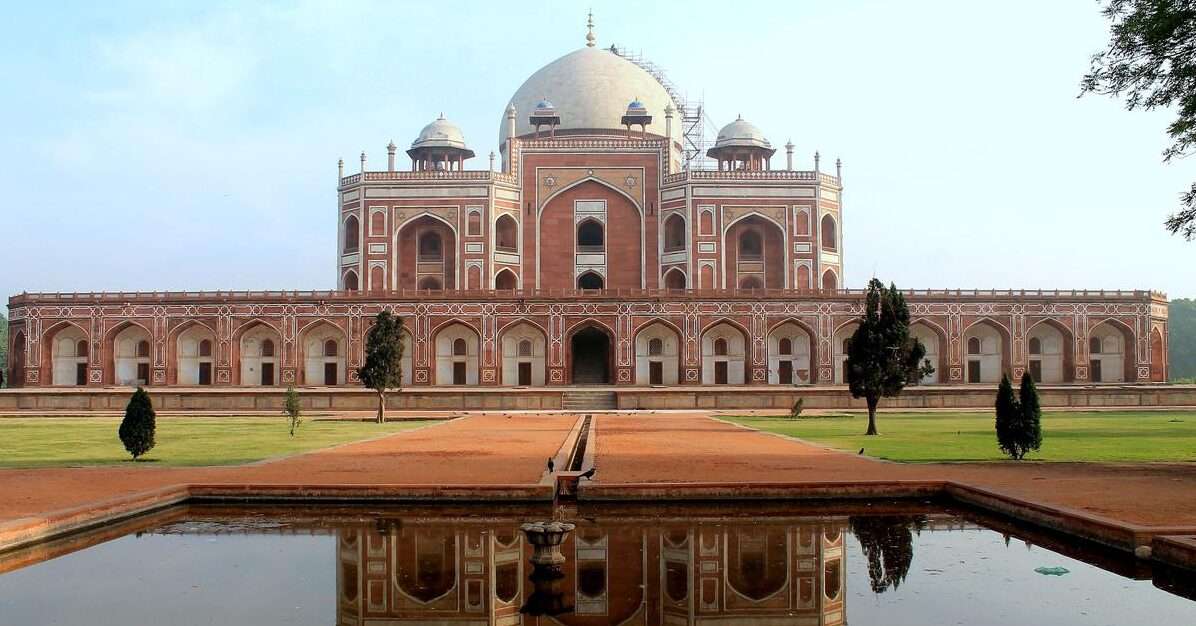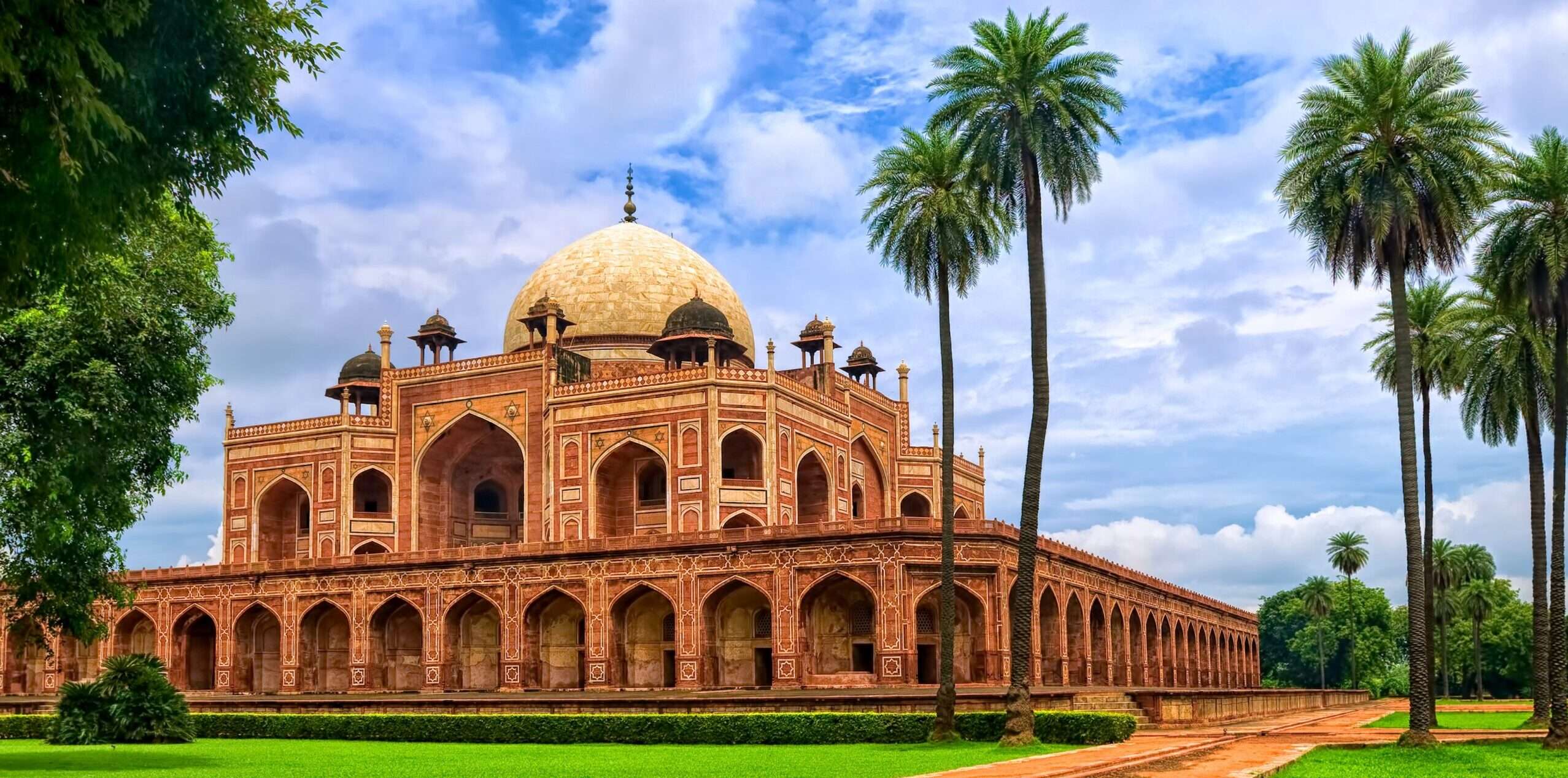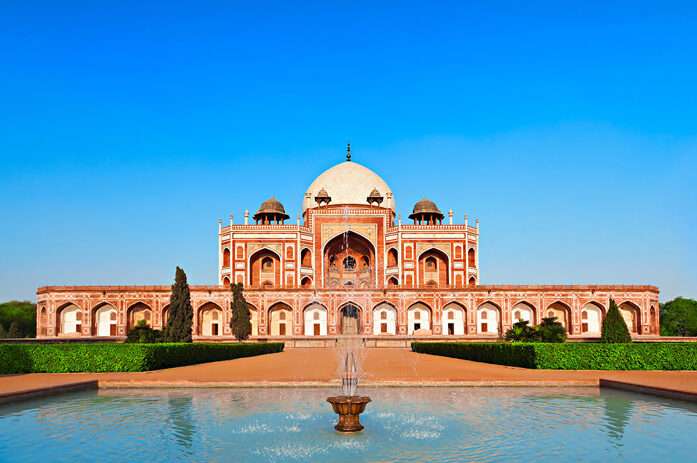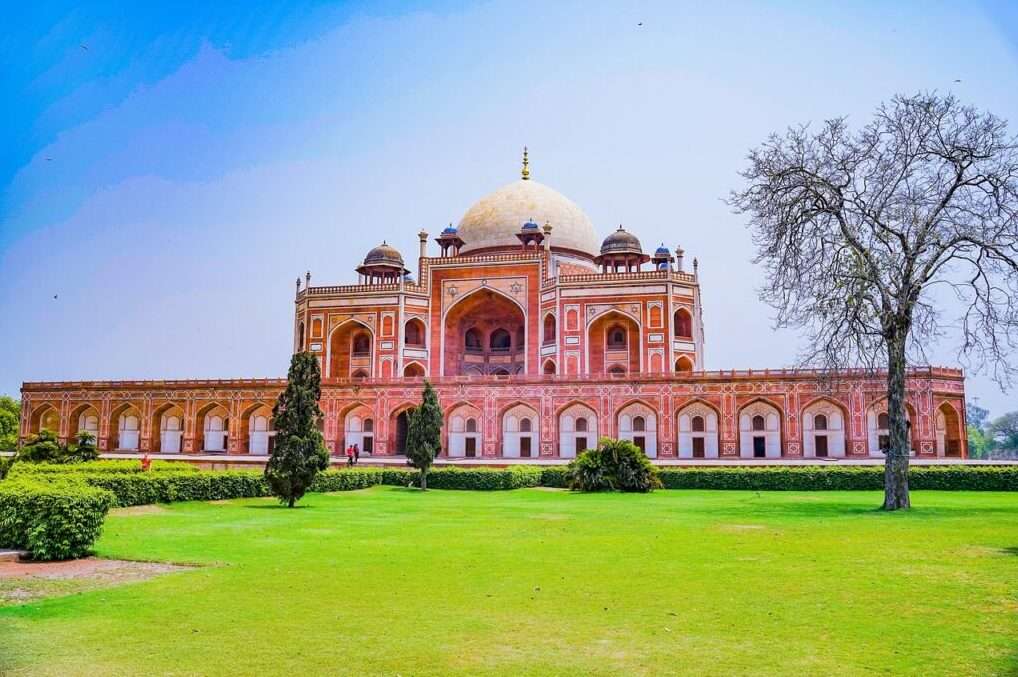Humayun’s Tomb: A Marvel of Mughal Architecture
 Humayun’s Tomb, a monument to the magnificence and architectural genius of the Mughal era, is situated in the center of Delhi. This mausoleum, designated a UNESCO World Heritage Site, invites visitors to immerse themselves in the splendor of bygone eras.
Humayun’s Tomb, a monument to the magnificence and architectural genius of the Mughal era, is situated in the center of Delhi. This mausoleum, designated a UNESCO World Heritage Site, invites visitors to immerse themselves in the splendor of bygone eras.
The Past and Its Importance
 The mourning widow of Emperor Humayun, Hamida Banu Begum, commissioned Persian architect Mirak Mirza Ghiyas to create this mausoleum in 1569–1570. When the mausoleum was built, it represented a dramatic break from the then-dominant architectural trends by introducing the symmetrical charbagh (four gardens) pattern that would eventually come to define Mughal architecture.
The mourning widow of Emperor Humayun, Hamida Banu Begum, commissioned Persian architect Mirak Mirza Ghiyas to create this mausoleum in 1569–1570. When the mausoleum was built, it represented a dramatic break from the then-dominant architectural trends by introducing the symmetrical charbagh (four gardens) pattern that would eventually come to define Mughal architecture.
Humayun’s Tomb is of great historical significance because it was the model for the Taj Mahal and the first garden tomb in the Indian subcontinent. Its significance extends to the fact that it served as the final resting place for a number of Mughal emperors.
Architectures
The mausoleum is a superb example of how Indian and Persian architectural styles may coexist. Constructed predominantly from red sandstone and white marble, the structure is elevated and topped by a magnificent dome measuring 42.5 meters in height. The great artistry of the artists of that era is reflected in the geometric designs, calligraphic inscriptions, and delicate lattice work covering the walls and ceilings.
The tranquil atmosphere surrounding the mausoleum is created by the Charbagh garden, which is split into four squares by paths and water channels and represents the four rivers of Paradise in Islamic belief.
Visiting Advice:
Timing: To avoid crowds and take in the soft light and ethereal splendor of the tomb, visit in the early morning or late afternoon.
Tours with a guide: To fully grasp the architectural and historical subtleties, think about hiring a tour. They may provide enlightening perspectives on the monument.
Clothes: Wear modest clothing that is comfortable, especially if you intend to visit other local holy places.
Snapshots: Seize the beauty, but keep an eye out for other guests and abide by the photo policies.
Exploring: To enhance your visit, spend some time investigating the neighboring buildings, such as the Nila Gumbad and Isa Khan’s Tomb.
Respect: Since it’s a tomb and has religious significance for many, keep quiet and honor the place’s holiness.
How to Travel There:

The Tomb of Humayun is conveniently reachable by a number of transportation options. The closest metro station, if taking the Violet Line, is Jawaharlal Nehru Stadium. You can then go to the location with a quick autorickshaw ride from there. There are also plenty of taxis and app-based taxi services accessible.
In conclusion
Not only may one appreciate the architectural magnificence of Humayun’s Tomb, but one can also establish a connection with a momentous period in India’s history by visiting it. This monument’s tranquility and beauty make it a must-visit for anyone looking for a quiet getaway from Delhi’s bustle, as well as history buffs and lovers of architecture.
As a timeless representation of architectural genius, Humayun’s Tomb beckons tourists to delve further into the past and experience the grandeur of the Mughal era.




